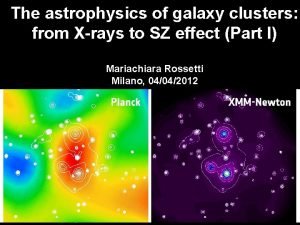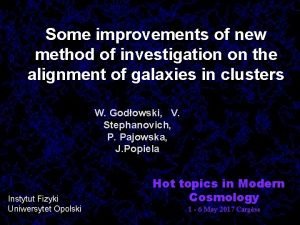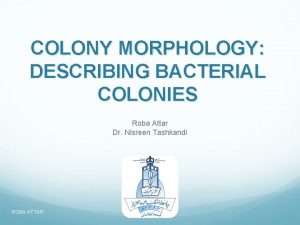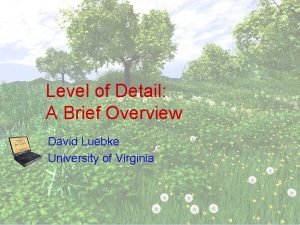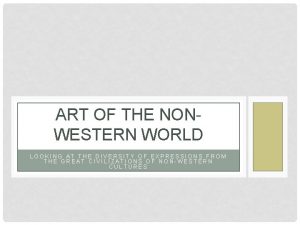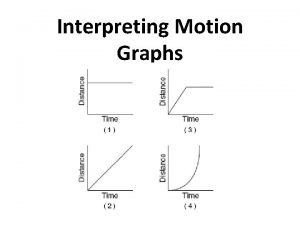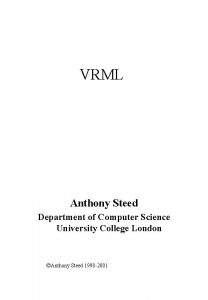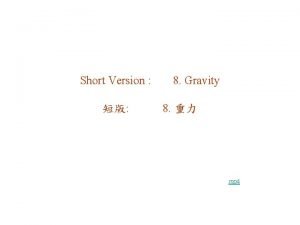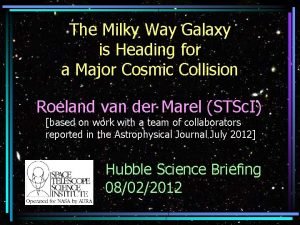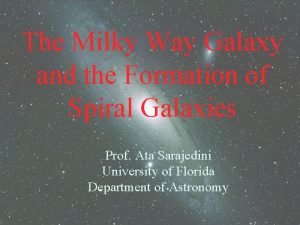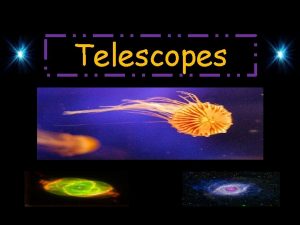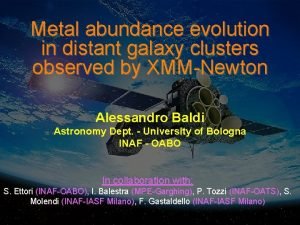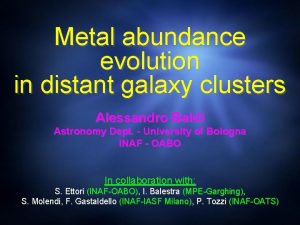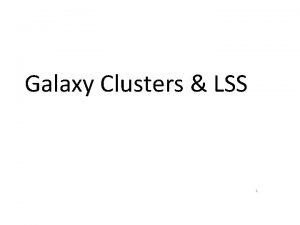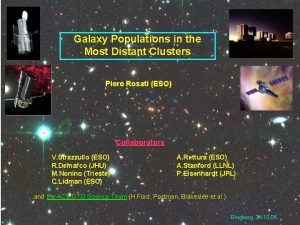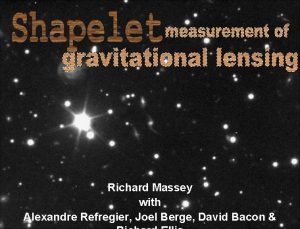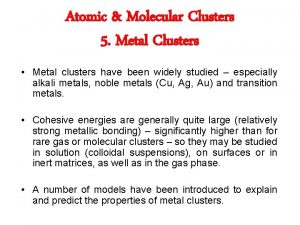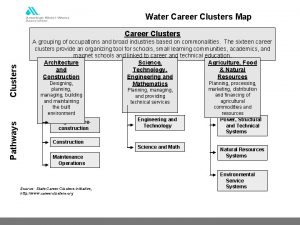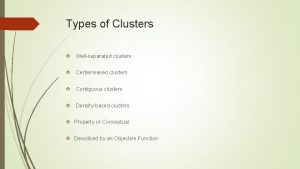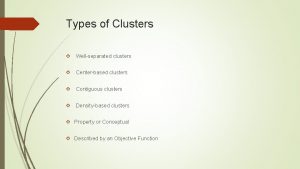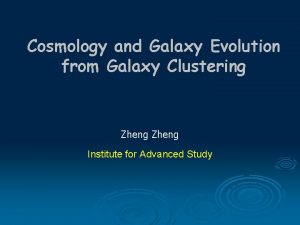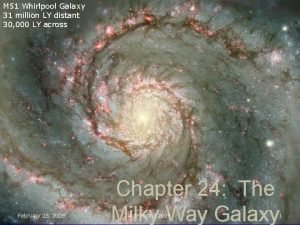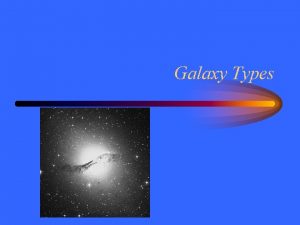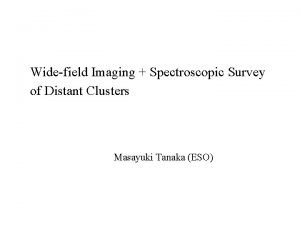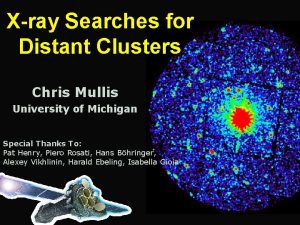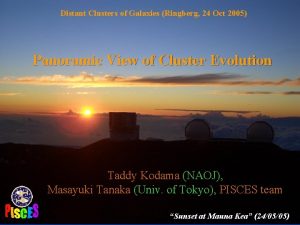The Evolution of Galaxy Morphologies in Clusters Distant




















- Slides: 20

The Evolution of Galaxy Morphologies in Clusters “Distant Clusters of Galaxies” Ringberg, October 2005 Marc Postman with lots of help from: Frank Bartko Txitxo Benitez John Blakeslee Nick Cross Ricardo Demarco Holland Ford Marijn Franx Tomo Goto Brad Holden Nicole Homeier Garth Illingworth Simona Mei Piero Rosati & the rest of the ACS IDT

Understanding the Origin of Morphological Differences in Galaxies • Is the morphology - density relation a fundamental relationship or is it a consequence of some other underlying correlation (e. g. , galaxy mass - density relationship)? When does the MDR get established? • How do the morph. populations of galaxies in clusters and the field vary with redshift? Does the MDR evolve? – The evolution in morphological composition as functions of radius, density, SFR, galaxy mass are powerful constraints on galaxy formation models. Only HST has the angular resolution to study this evolution. • What are the progenitors of current epoch S 0 galaxies? Do mergers play an important role in morphological transformation of cluster galaxy populations? • Is the morphological population set mostly by environmental processes or initial conditions? Is the answer to this question dependent on galaxy mass?

Understanding the Origin of Morphological Differences in Galaxies • What we knew prior to ACS on HST: – The relative fraction of galaxy morphologies depends on density (Dressler 1980, Postman & Geller 1984) and/or on clustocentric radius (Whitmore & Gilmore 1993) Goto et al 2003 – Physical processes exist that can alter galaxy morphology on timescales much less than the current age of the universe: ram pressure, tidal disruption, mergers – Data suggested there is detectable evolution in the morphological composition of clusters over the past ~5 Gyrs: z~0. 5 to the present epoch (Dressler et al 1997; Fasano et al. 2000; Treu et al. 2003). Quilis, Moore, & Bower Poggianti 2000: 2000 Ram pressure induced gas stripping; Timescale ~100 Myr

Ellipticals Lenticulars (S 0) Spirals + Irreg 20 kpc z =0. 83 Images of different morph types z =0. 84 z =0. 90 z =0. 92 z =1. 10 z =1. 24 z =1. 27 E

Morphology - Density Relation Morphology - Radius Relation P 2005 ACS z~1 E+S 0 Fraction WG 91 z ~ 0 E+S 0 Fraction MDR & MRR Results PG 84 z~0 E+S 0 Fraction D 80/D 97 z~0 E+S 0 P 2005 ACS z~1 E+S 0 Smith et al 2005 z~1 E+S 0 P 2005 ACS z ~ 1 Ellipticals PG 84 z ~ 0 Ellipticals D 80/D 97 z ~ 0 Ellipticals P 2005 ACS z~1 Ellipticals WG 91 z ~ 0 Ellipticals P 2005 ACS z~1 S 0 Fraction P 2005 ACS z ~ 1 S 0 Fraction PG 84 z ~ 0 S 0 Fraction D 80/D 97 z ~ 0 S 0 Fraction WG 91 z ~ 0 S 0 Fraction R/R 200 Projected Density

Postman et al. 2005 Evolution in MDR The increase in the early-type fraction with increasing density is less rapid at z~1 than at z~0. Consistent with environmentally driven transformation of late --> early types. S 0 fraction at z~1 is <50% of its z~0 value but consistent with its z~0. 5 value (e. g. , Dressler et al. 1997; Fasano et al. 2000; Treu et al. 2003) Smith et al. 2005 No significant evolution seen in elliptical population fraction density relation. Does not imply cosmic E pop doesn’t increase with time, however. No significant evolution seen at low-density (Smith et al. 2005; Mobasher et al. 2006) But pop fractions may be correlated with LX

RXJ 1252 -29 Galaxy Population vs. Cluster Properties MS 1054 -0321 CL 1604+4304 RXJ 0152 -1357 CL 1604+4321 f. E+S 0 LX(0. 33 +/- 0. 09) RXJ 0910+54 RXJ 0848+44 MS 1054 -0321 RXJ 0152 -1357 CL 1604+4304 RXJ 1252 -29 f. E LX(0. 15 +/- 0. 09) RXJ 0910+54 RXJ 0848+44 f. S 0 LX(0. 18 +/- 0. 09) RXJ 0152 -1357 RXJ 1252 -29 CL 1604+4304 CL 1604+4321 MS 1054 -0321

T - ∑ Relation vs. Galaxy Mass HOLDEN ET AL. 2005, IN PREP. Log(M) > 10. 85 MS 1054 + RXJ 0152 z=0. 83 10. 5 < Log(M) < 10. 85

z ~ 1 Cluster Disk Galaxy Sample Spectroscopically confirmed members with types Sa or later

z~1 Cluster Disk & SF Galaxy Properties Homeier et al. 2005, Demarco et al. 2005, Homeier et al. 2005, in press. • Cluster spirals are significantly redder their field counterparts • But, their quantitative morphologies (C, A, S) are indistinguishable • Sizes (R 1/2 or disk scale height) of cluster and field galaxies are similar • Blue cluster disk galaxies show evidence (97% C. L. ) for enhanced central star formation. • Star forming cluster galaxies avoid densest regions. Most (~80%) are “normal” spirals. (a la Gisler 1978; Lewis et al. 2002; Gómez et al. 2003) CGE = 10 xlog (rred/rblue) Cluster Field AGN

Can we make a Coma S 0 from a single z = 0. 83 cluster spiral? Holden et al. 2005, in prep. z=0. 83 E+S 0 z=0. 83 Spirals

Close Pair Candidates CL 0152 MS 1054

MS 1054: Tran et al. 2005

Bartko et al. 2006 Red Pair Excess Jitter ( = 50 kpc) 3. 29 4. 45 2. 81 2. 84 1. 01

Bartko et al. 2006 Red Pair Excess Jitter ( = 50 kpc)

Low-z clusters MS 1358 (z=0. 33) CL 0016 (z=0. 54)

Bartko et al. 2006, in prep • MS 1054 & CL 0152 have comparable merger fractions. • Excess of red galaxy pairs appears to be a common (but not a universal) phenomenon associated with very dense environments at z ~ 1. It is not seen at lower z nor in less massive (<5 x 1014 solar masses) hi-z clusters. Caveat: small sample! • Early type mergers confined to central regions. Late type merger fraction not strongly dependent on radius once beyond central 500 kpc or so.

Brightest Cluster Galaxies CL 0152 -13 Elliptical S 0/a CL 1604+4321 MS 1054 Elliptical CL 1604+4304 Sb/Sc S 0/a Elliptical CL 0910+54 CL 1252 -29

BCG Luminosity Evolution Postman et al. 2006, in prep. z ~ 1 BCG exhibit a broader morphological distribution than their z=0 counterparts M 2 - M 1 in all but one of these z~1 clusters is smaller (<0. 13 mag) than that in ~90% of the z~0 rich Abell clusters [Exception is MS 1054 which has 0. 36 mag contrast] We expect some of these BCGs to undergo a doubling in mass by z~0. 5 (e. g. , RDCS 12522927)

Implications for the Evolution of Cluster Galaxy Morphologies • • MDR is a fundamental relationship, not a simply consequence of massdensity relationship. But the formation of the most massive galaxies may be determined by either initial or large scale conditions. E and S 0 populations likely have different formation histories. Up to 50% of S 0’s in high density regions could be in place by z~1. Work done at z ~ 0. 5, shows a similar deficit of S 0 galaxies (e. g. , Dressler et al. 1997; Fasano et al. 2000). We are witnessing the “recent” build up of about half the cluster S 0 population via the transformation of in-falling spiral galaxies. z ~ 1 Cluster spirals are not a “pristine” population - i. e. , they already exhibit evidence for environmentally induced alteration of their stellar populations (relative to field galaxies at similar redshifts). However, a typical z=0 S 0 is twice as massive as a typical z=1 cluster spiral. And z~1 BCGs show much more morphological variation than those at z=0. Many cannot simply be passively evolved to match current epoch BCG luminosities. Merging is likely an important process.
 Elliptical spiral and irregular
Elliptical spiral and irregular Galaxy clusters
Galaxy clusters Galaxy clusters
Galaxy clusters Galaxy clusters
Galaxy clusters Undulate bacterial colony
Undulate bacterial colony Bars of rage
Bars of rage Distant
Distant Peace is not merely a distant goal
Peace is not merely a distant goal Non western artists
Non western artists Interpret motion graphs
Interpret motion graphs Distant
Distant Distant
Distant Distant past tense
Distant past tense A dangerous whirlpool personified as a female sea monster
A dangerous whirlpool personified as a female sea monster Retrograde motion of mars
Retrograde motion of mars Instructional aims
Instructional aims Project wingman galaxy cbt
Project wingman galaxy cbt Largest galaxy
Largest galaxy Milky way galaxy sketch
Milky way galaxy sketch Closest galaxy to milky way
Closest galaxy to milky way Galaxy classification
Galaxy classification


